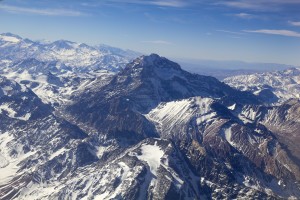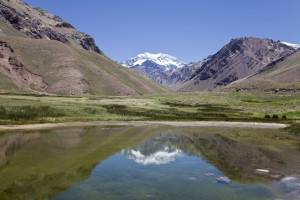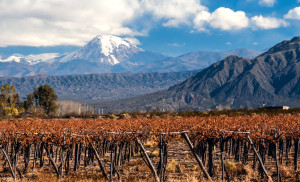 It’s higher than Mount Kilamangaro and Mount McKinley. It could easily lose Europe’s highest mountain – Mont Blanc – in its shadow. It provides irrigation and (of course) elevation for some of the finest wine regions in Chile and Argentina.
It’s higher than Mount Kilamangaro and Mount McKinley. It could easily lose Europe’s highest mountain – Mont Blanc – in its shadow. It provides irrigation and (of course) elevation for some of the finest wine regions in Chile and Argentina.
If that isn’t enough to impress you, consider this: it is the highest mountain in all of the Americas, the Western Hemisphere, and the Southern Hemisphere. It touches the sky at 22,837 feet above sea level, and one has to travel over 10,270 miles – to Asia – to find a higher mountain.
We’re talking about the highest mountain in the Andes – Mount Aconcagua. It is a dream destination for mountain climbers, especially if you consider that the mountain’s northern approach is considered by mountaineering standards to be an “easy route.” It’s considered a “non-technical” mountain climb, meaning that one can make it to the summit without ropes, axes, or pins. Be careful, though – with an atmospheric pressure of only 40% that of sea level, strong winds, electrical storms, and a potential low temperature of -13°F (-25°C), you are advised to be careful.
Mount Aconcagua is located in Argentina’s Mendoza province, very close to the border between Mendoza and San Juan. The mountain and its surroundings on the Argentine side are part  of the Aconcagua Provincial Park. The summit is about 70 miles west and a bit north of the city – and vineyards – of Mendoza.
of the Aconcagua Provincial Park. The summit is about 70 miles west and a bit north of the city – and vineyards – of Mendoza.
To the west, the summit of Mount Aconcagua is located about 5 miles from the international border with Chile. The Aconcagua wine region on the Chilean side of the border is actually named for the river that flows from the summit of the mountain to the Pacific Ocean. The Aconcagua viticultural region has three sub-regions: The Aconcagua Valley, the Casablanca Valley, and San Antonio Valley.
The Aconcagua Valley is located about 40 miles north of the city of Santiago and forms a narrow east-west valley along the path of the river. The area is classified as an “Entre Cordilleras” (between the mountains) climate area. The area receives only about 8 inches of rain a year, so irrigation from the river is essential. Mount Aconcagua towers over the region, which has a long history of red wine production. Cabernet Sauvignon is the widely planted grape, followed by Merlot and Carmenère.
The Casablanca Valley is located about 7 miles north and to the west of the Aconcagua Valley. The Casablanca Valley is well-known as a “costa” (coastal) climate region, and enjoys the cool, foggy mornings and maritime influence of the Pacific Ocean. Chardonnay and Sauvignon Blanc are by far the most widely planted grape varieties here, accompanied by plantings of white aromatics such as Gewurztraminer, Pinot Gris, and Riesling. Small amounts of red grapes, particularly Cabernet Franc, Merlot, and Pinot Noir, are planted as  well.
well.
Located south of the Casablanca Valley and, at points, as close as 2.5 miles from the ocean, the San Antonio Valley is also a “costa” climate region. The San Antonio Valley is a relatively new wine region known for crisp, mineral-driven Chardonnay and Sauvignon Blanc, as well as cool-climate expressions of Pinot Noir and Syrah.